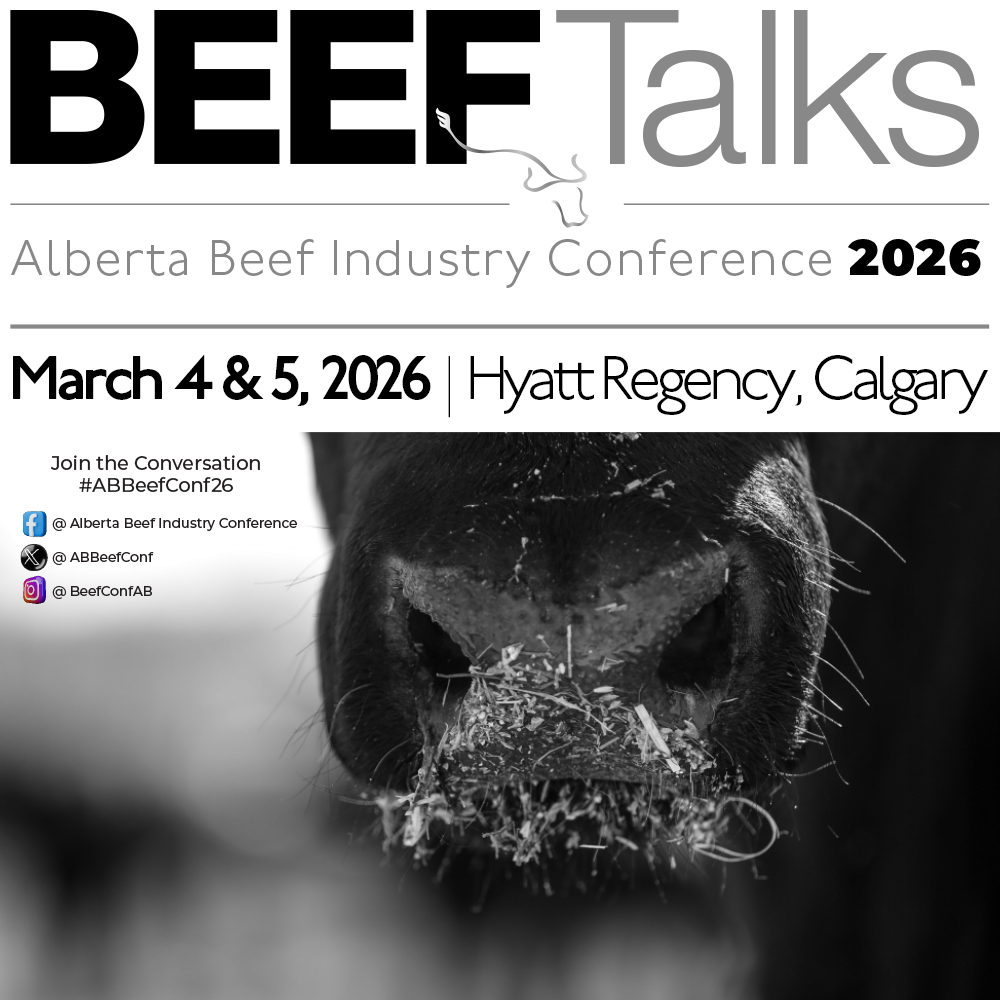AB Direct - Steers
Rail: 492.00-493.50 FOB feedlot (last week)
AB Direct - Heifers
Rail: 492.00-493.50 FOB feedlot (last week)
US Trade- Steers
Rail: 355.00-363.00 (IA, NE) last week
US Trade - Heifers
Rail: 355.00-363.00 (IA, NE) last week
Canadian Dollar
0.19
Utrecht calving technique uses natural positioning for smooth delivery, says veterinarian
“Whenever I’m speaking about dystocia, I always begin by mentioning the numbers 15 and 3,” says Mark Hilton, DVM and Midwest Beef Cattle Consultant. “If we have to assist more than 15 percent of our heifers and 3 percent of our mature cows, we have a problem needing attention, and it’s most likely our genetics.”
Hilton describes the most common cause of dystocia in heifers as fetal/dam disparity. This condition is often a result of genetics, and its most basic prevention strategy is to breed heifers to proven sires with high calving ease EPDs from breeds known for this trait.
Giving cows and calves support after a hard calving
Even when being careful with mating combinations, it’s inevitable that producers calving out heifers will need to step in and assist from time to time.
Hilton recommends using the Utrecht technique as the easiest way to deliver a calf as it mirrors how females normally lie down during delivery.
“It’s easy on the human, the cow, and the calf,” Hilton says. “Plus, it uses the natural position for the smoothest delivery process.”
Hilton outlines the 4 keys to using the Utrecht technique successfully as:
- Dilation of the birth canal.
- Manipulating the calf (if needed) into the correct position while the cow or heifer is standing.
- Casting the cow in lateral recumbency.
- Applying traction during contractions.
Dilation
Hilton believes in nearly all cases it’s helpful to manually dilate the vulva and vagina for approximately 1 to 3 minutes to help prevent tearing the delicate tissues of the birth canal. To accomplish this, first thoroughly clean the vulva and area with disinfectant based solutions. Place both gloved, lubricated arms into the birth canal, clasp the fingers together, and expand the arms laterally to encourage dilation. It can also be accomplished by placing one gloved, lubricated hand on top of the calf’s head and lifting dorsally by extending one’s ankles.
“This manual dilation of the birth canal is necessary and will greatly ease delivery,” Hilton says. “Dilating time is time well spent because the chance of trauma to the mother and her offspring will be greatly reduced.”
Manipulation
An assessment of presentation should be completed to confirm a reasonable chance of delivery. If the fetus appears normal in the birth canal with adequate room, positioned with front legs supporting the head, assistance for a vaginal delivery should continue. When the front feet of the fetus are crossed, this is a sign of fetal/dam disparity. This occurs because the shoulders are
wedged into the pelvis forcing the legs or feet medially. If uncertain as to whether a successful vaginal birth is possible, surgical methods should be evaluated.
For a vaginal delivery attempt, place the chains on the legs as is normally done using a double half-hitch above the fetlock, and one between the fetlock and hoof.
Casting
To cast the cow, a lariat should be looped around the neck with the length of rope laid horizontally down the back, then half-hitched under the animal behind the front legs and again in front of the back legs. She should be haltered with the lead shank tied low behind her. Back her out of the chute keeping the halter tied securely. While one person pulls from behind on the lariat rope, another should apply traction to the chains. This combination will stimulate contractions making her easier to cast. Normally, she will first lie in a sternal position but keeping horizontal tension on the lariat will ease her onto her side.
“In this natural position, she’ll push much harder,” Hilton explains. “This positioning stimulates contractions and allows the pelvis to tilt slightly, functionally increasing in size, which helps the calf come out more easily.”
Pulling
Pull straight out with hooks and chains or a calf jack, gently pressing down on both legs to lift the hips up to the cow’s pelvis.
“At this point, the key is to go slowly, only applying pressure when she pushes,” Hilton stresses. “When she rests, we rest.”
Once the chest is exposed, stop pulling and take a break. Wait about 30 seconds as she will normally rotate the calf a few degrees inside her pelvis to avoid hip-lock. This will also allow the newborn to start breathing.
Once out and on the ground, place the calf in a dog sitting position so the lungs inflate equally.
“Never hang a newborn upside down,” Hilton warns. “If respiration needs to be initiated, stick a clean straw into a nostril, gently contacting the nasal mucosa. This will stimulate gasping and encourage breathing. Repeat this until the calf is ventilating regularly.”
BCRC publishes video guides for calving season
Using the Utrecht technique, especially with first-calf heifers may require slightly more effort, but according to Hilton, it takes advantage of nature’s time-tested strategy and will increase the chances of a successful delivery.


